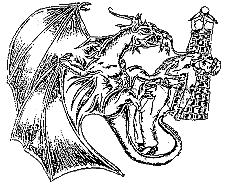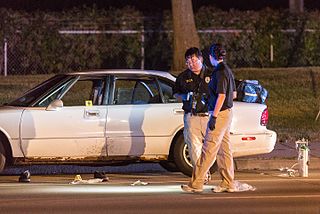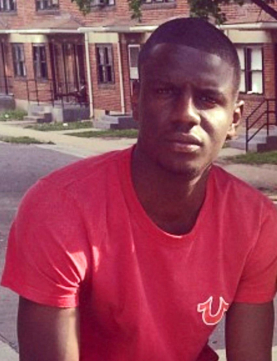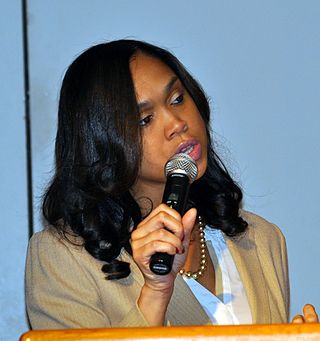
Crime in Canada is generally considered low overall. Under the Canadian constitution, the power to establish criminal law and rules of investigation is vested in the federal Parliament. The provinces share responsibility for law enforcement, and while the power to prosecute criminal offences is assigned to the federal government, responsibility for prosecutions is delegated to the provinces for most types of criminal offences. Laws and sentencing guidelines are uniform throughout the country, but provinces vary in their level of enforcement.

The Black Guerrilla Family is an African American black power prison gang, street gang, and political organization founded in 1966 by George Jackson, George "Big Jake" Lewis, and W.L. Nolen while they were incarcerated at San Quentin State Prison in Marin County, California.

The Baltimore Police Department (BPD) is the municipal police department of the city of Baltimore, Maryland. Dating back to 1784, the BPD, consisting of 2,935 employees in 2020, is organized into nine districts covering 80.9 square miles (210 km2) of land and 11.1 square miles (29 km2) of waterways. The department is sometimes referred to as the Baltimore City Police Department to distinguish it from the Baltimore County Police Department.
Crime in St. Louis includes an overview of crime both in the city of St. Louis and in the Greater St. Louis metropolitan area. Crime in the city increased from the 1960s through the early 1990s as measured by the index crime rate. Despite decreasing crime, rates of violent crime and property crime in both the city and the metropolitan area remain higher than the national metropolitan area average. In addition, the city of St. Louis consistently has been ranked among the most dangerous cities in the United States. As of April 2017, St. Louis has the highest murder rate in America. At the end of 2017, St. Louis metropolitan had 205 murders, 159 of which were within the city limits. In 2018, the new Chief of Police, John Hayden said two-thirds (67%) of all the murders and one-half of all the assaults are concentrated in a triangular area in the north part of the city.
Crime has been recorded in the United States since its founding and has fluctuated significantly over time, with a sharp rise after 1900 and reaching a broad bulging peak between the 1970s and early 1990s. After 1992, crime rates have generally trended downwards each year, with the exceptions of a slight increase in property crimes in 2001 and increases in violent crimes in 2005-2006, 2014-2016 and 2020-2021. While official federal crime data beginning in 2021 has a wide margin of error due to the incomplete adoption of the National Incident-Based Reporting System by government agencies, federal data for 2020-2021 and limited data from select U.S. cities collected by the nonpartisan Council on Criminal Justice showed significantly elevated rates of homicide and motor vehicle theft in 2020-2022. Although overall crime rates have fallen far below the peak of crime seen in the United States during the late 1980s and early 1990s, the homicide rate in the U.S. has remained high, relative to other "high income"/developed nations, with eight major U.S. cities ranked among the 50 cities with the highest homicide rate in the world in 2022. The aggregate cost of crime in the United States is significant, with an estimated value of $4.9 trillion reported in 2021. Data from the first half of 2023, from government and private sector sources show that the murder rate has dropped, as much as 12% in as many as 90 cities across the United States. The drop in homicide rates is not uniform across the country however, with some cities such as Memphis, TN, showing an uptick in murder rates.

Sheila Ann Dixon is an American politician who served as the forty-eighth mayor of Baltimore, Maryland, after mayor Martin O'Malley was sworn in as governor on January 17, 2007. Dixon, then president of the Baltimore City Council, served out the remaining year of her term and won the mayoral election in November 2007. Dixon was the first African-American woman to serve as president of the City Council, Baltimore's first female mayor, and Baltimore's third black mayor.
As of 2018, Detroit had the fourth highest murder rate among major cities in the United States after St. Louis and Baltimore and the 42nd highest murder rate in the world. The rate of robberies in Detroit declined by 67% between 1985 and 2014 while the rate of aggravated assaults increased. As a whole, the city's crime rate has decreased considerably from its 1980s peak.

Sandtown-Winchester is a neighborhood in West Baltimore, Maryland. Known locally as Sandtown, the community's name was derived from the trails of sand that dropped from wagons leaving town after filling up at the local sand and gravel quarry back in the days of horse-drawn wagons. It is located north of Lafayette Street, west of Fremont Avenue, south of North Avenue, and east of Monroe Street, covering an area of 72 square blocks, patrolled by the Baltimore Police Department's Western District. The community is 98.5% black.
Crime in Chicago has been tracked by the Chicago Police Department's Bureau of Records since the beginning of the 20th century. The city's overall crime rate, especially the violent crime rate, is higher than the US average. Gangs in Chicago have a role in the city's crime rate. The number of homicides in Chicago hit a 25-year high in 2021.
Crime in Los Angeles has varied throughout time, reaching peaks between the 1970s and 1990s. Since the early 2020s, crime has increased in Los Angeles.
Crime in Atlanta, Georgia is above the national median and has been a major problem for the city since the middle 20th century.
Anthony W. Batts is an American law enforcement officer who served as the chief of three different police departments in the United States: The Long Beach, California Police Department, the Oakland, California Police Department, and the Baltimore, Maryland Police Department.
In 2015 there were 166,510 crimes reported in the U.S. state of Maryland, including 493 murders.

Crime in Minnesota encompasses a wide range of unlawful activities that occur within the state, regulated by both state and federal laws. While crime rates in Minnesota are generally below the national average, certain areas and types of crime have garnered public attention.
Crime in Oakland, California began to rise during the late 1960s after the King assassination riots, and by the end of the 1970s Oakland's per capita murder rate had risen to twice that of San Francisco or New York City. In 1983, the National Journal referred to Oakland as the "1983 crime capital" of the San Francisco Bay Area. Crime continued to escalate during the 1980s and 1990s, and during the first decade of the 21st century Oakland has consistently been listed as one of the most dangerous large cities in the United States.
In 2014, the city of Memphis ranked eleventh in violent crimes for major cities around the U.S. In 2006, Memphis led the nation in number of violent crimes. In 2001, 2005, and 2007, Memphis ranked second most dangerous in the nation among cities with a population over 500,000. It also ranked as most dangerous in 2002. There are approximately 182 gangs in Memphis, Tennessee with 8,400 gang members in the county.

On April 12, 2015, Freddie Carlos Gray Jr., a 25-year-old African American, was arrested by the Baltimore Police Department over his legal possession of a knife. While in police custody, Gray sustained fatal injuries and was taken to the R Adams Cowley Shock Trauma Center. Gray died on April 19, 2015; his death was ascribed to injuries to his cervical spinal cord.

On April 12, 2015, Baltimore Police Department officers arrested Freddie Gray, a 25-year-old African American resident of Baltimore, Maryland. Gray's neck and spine were injured while he was in a police vehicle and he went into a coma. On April 18, there were protests in front of the Western district police station. Gray died on April 19.

Marilyn Mosby is an American politician and lawyer who served as the State's Attorney for Baltimore from 2015 to 2023. Mosby gained national attention following the killing of Freddie Gray in 2015, after which she led a highly publicized investigation and unsuccessful murder prosecution of the police officers who arrested and transported Gray.
The Ferguson effect is an increase in violent crime rates in a community caused by reduced proactive policing due to the community's distrust and hostility towards police. The Ferguson effect was first proposed after police saw an increase in violence following the 2014 shooting of Michael Brown in Ferguson, Missouri. The term was coined by Doyle Sam Dotson III, the chief of the St. Louis police, to account for an increased murder rate in some U.S. cities following the Ferguson unrest. Whether the Ferguson effect really exists is subject of discussions with many published studies reporting contradicting findings concerning whether there is a change in crime rates, number of 911 calls, homicides, and proactive policing. Furthermore, the effect and influence of the portrayal of police brutality in the media is also contested.









